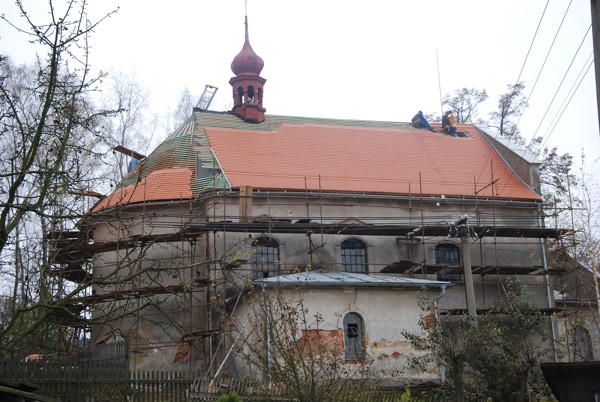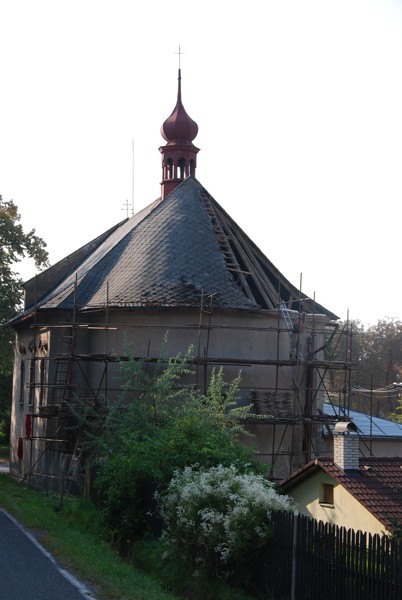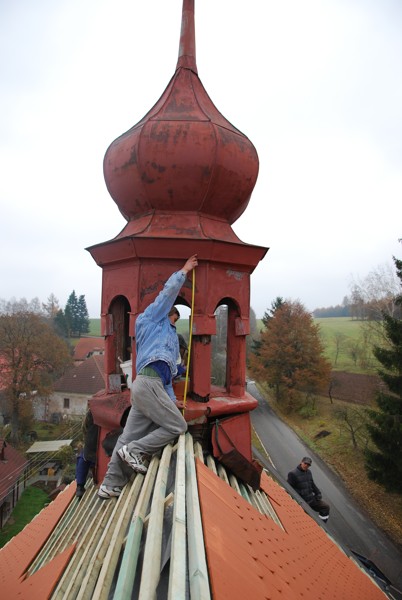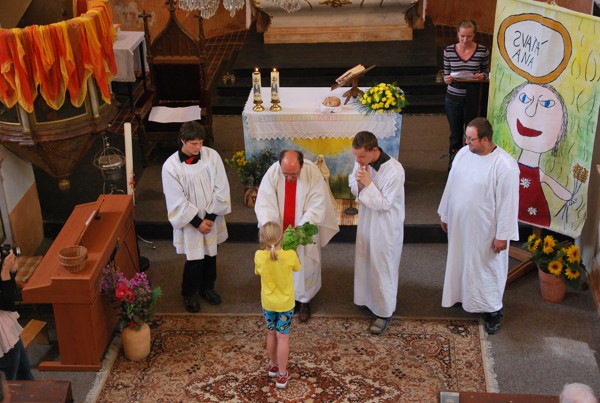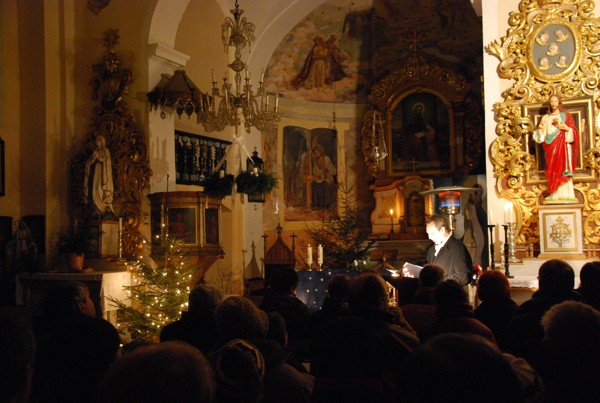Church
Since 2008, we have rented the Modletín church from the Hradec Králové Diocese for the purpose of its reconstruction. A substantial part of the reconstruction took place in the years 2009 - 2010. In 2009, the trusses were repaired, a new roof covering was laid, including sheeting, and new gutters and downspouts were installed. In 2010, the sanctuary tower was replaced, new roofs were made over the sacristy, and the base of the church's masonry was completely dehumidified, with rainwater drainage build.
In the coming years, we would like to make a new facade and repair windows.
Photos from the reconstruction:
The reconstruction was mainly covered by subsidies from the SZIF (European Agricultural Fund for Rural Development) and the Czech Ministry of Culture.
The following donors in particular contributed to the repair of St. Anne's Church: the village of Rušinov, the village of Horní Bradlo, the town of Libice nad Doubravou.
The inhabitants of these villages contributed in the public collections: Modletín, Hostětinky, Vratkov, Horní Bradlo, Lipka, Rušinov, Lány. Other donors also contributed smaller donations.
On the restoration of the church of St. Anny participated:
employees and volunteers from Benediktus, Ing. Tomáš Koreček, Ing. Jan Hubáček (technical documentation, construction supervision), Pavel Popek (construction work), Jaromír Leffler (carpentry work), Inklez Havlíčkův Brod - Vratislav Turenič (supplier company).
The church is regularly used for worship. Spiritual administration is provided from Chotěboř. The church is by Benediktus for spiritual activities and cultural events.
Photos from the St. Anne's Fairground and Advent concert:
History of the St. Anne’s Church:
The story of the miraculous healing St. Anne's spring has been told on the site of today's church since time immemorial. According to tradition, a chapel was built on the site at the end of the Middle Ages. A wooden chapel was built in 1699 as the expression of gratitude for the healing. In the years 1720-1721, a brick chapel was built in its place, which is the core of today's church. According to tradition, a miraculous spring erupted in Modletín, which healed many people, and water from this spring was also used in the Modletín spa.
From the history of the church prepared on the basis of SHP PhDr. Pavel Zahradník and Ing. Sheet. Jan Hubáček
The story of the miraculous healing St. Anne's spring has been told on the site of today's church since time immemorial. According to tradition, a chapel was built on the site at the end of the Middle Ages. In 1699 a wooden chapel was built. The chapel was built by Adamína Hochberková as the expression of gratitude for healing from diseases. However, the chapel soon fell apart. In its place, a brick chapel was built in the years 1720 - 1721, which is the core of today's church. The chapel served in this form at a time when Modletín and Hostětinky experienced the development of spa and subsequently the development of glassmaking. During the 18th century, the chapel of St. Anny was continuously repaired. The Josephine church reforms led to the promotion of the chapel to a branch church and the establishment of a clerical administration with a permanently established chaplain. The turn of the 19th and 20th centuries led to a larger reconstruction plan, incl. baptistery and towers. However, the original plan was eventually reduced to the reconstruction of the sacristy and a brick narthex was built as a replacement for the wooden vestibule. This also led to the transfer of the stone coat of arms of the Schmiedels from Schmieden from the position above the entrance to the church to the plinth on the northern side of the narthex – according to tradition just above the place where the miraculous fountain springs. The spring disappeared with the reconstruction of the road and with a deeper impact on the subsoil. This reconstruction from 1910 - 1913 gave the church its present appearance. After many years of preparations, in the 1940s the church was provided with a new roofing made of asbestos stencils. Probably at the same time the church was electrified. In 1941-42, the academic painter and mystic R. Adámek redesigned the interior of the church and the narthex with wall and ceiling paintings, which were severely damaged by unprofessional "repairs" in the 1990s. The original furniture, the altar and the organ in the Baroque form have not been preserved – they was gradually replaced. After 1990, the church was looted, many statues and paintings disappeared, and the side altars were damaged. After the death of the last permanent pastor, Josef Jahoda, in 1960, the parish had no direct spiritual administrator and is currently provided by the Dean of Chotěboř. This leads to a lower frequency of services and reduced church use. This situation is co-caused by the totalitarian policy of the regime in the years 1948 to 1989, which had a long-term impact on the overall state of life in the village – reducing the population, atheization and deteriorating the economy of small villages.

